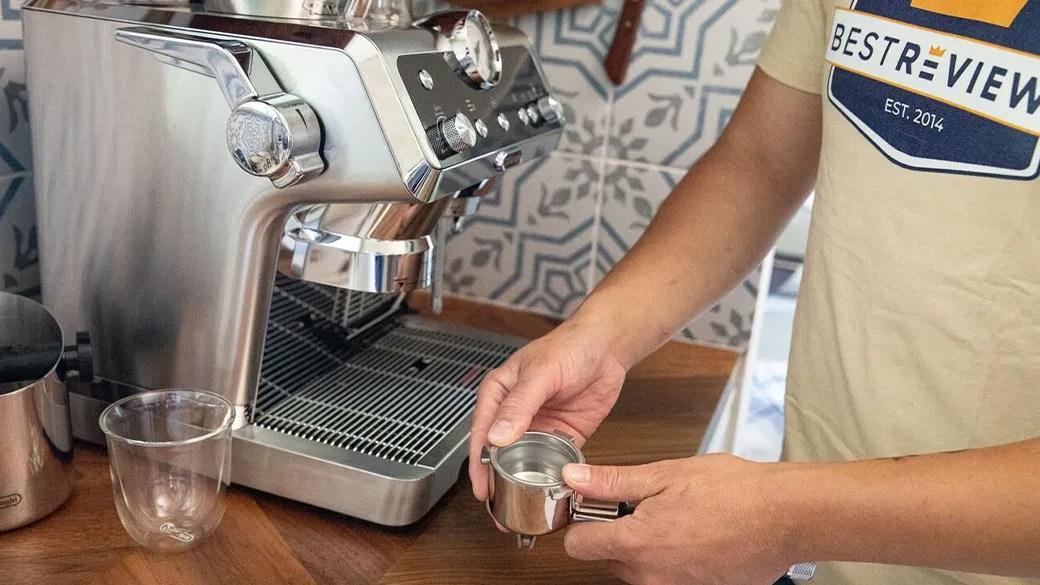
Best ceramic coffee grinder
Which ceramic coffee grinders are best?
For coffee aficionados, nothing beats a fresh cup of joe made by hand. But one of the most important factors in brewing a quality cup is the grind of the coffee beans. While large electric grinders may be fitting for a large pot of coffee, a manual grinder adds accuracy and consistency to your small-batch manual coffee brews. Ceramic coffee grinders are easy to use and can make a big difference in the flavor of your cup. For a top pick, the Hario Skerton Plus Ceramic Coffee Grinder is just one option guaranteed to elevate your brew.
What to know before you buy a ceramic coffee grinder
Upon first look, the inclusion of ceramic parts is not apparent in most manual grinders. That’s because the material is used in the construction of the burrs. As opposed to stainless steel, ceramic burrs create far less heat in the process, making them last longer without damage, wear and tear.
Size
Ceramic coffee grinders are generally pretty small, with a footprint that makes them ideal for small spaces or traveling. However, it’s important to find a grinder that fits your capacity needs — different preparation methods require varying amounts of ground coffee for the ideal cup.
Intended use
Because of their relatively small size, ceramic coffee grinders are best used for manual brewing methods — Hario’s V60 pour over or Bodum’s Brazil French press are both popular. Between the capacity of the grind container and the physical energy it takes to operate the grinder, ceramic coffee mills are designed for small-batch servings. If you need to brew a full pot, you’re better off finding a high-quality electric grinder.
Burr vs. blade grinder
According to coffee professionals, if you want the best results in flavor and consistency, a burr grinder is always preferable to a blade grinder. Blade grinders are far less consistent, breaking beans unevenly rather than accurately shaving them into an even ground size and shape like a burr grinder. Blade grinders make for great spice mills, but unless you’re planning on drinking ground spices in your tea, stick to a burr grinder.
What to look for in a quality ceramic coffee grinder
Grind settings
Although the difference is indiscernible to the naked eye, various brewing methods require different grind sizes. Manual coffee grinders are typically easily adjustable, making it convenient to switch between fine grind for espresso and coarse grind for French press and everything in between. However, some manual grinders might be harder to adjust, so take grind setting capabilities into close consideration when choosing a ceramic burr grinder.
Materials
While the internal gears are made from ceramic, the rest of the grinder can be constructed with a number of different materials that may or may not make a significant difference. Many receptacles are made from glass or heat-treated plastic compounds, while the other parts are constructed from steel, poly materials and wood. It’s all about finding the best combination for your needs.
Maintenance
Some ceramic coffee grinders are easier to disassemble and clean than others but are overall much simpler to maintain than electric coffee grinders. Some models even come with cleaning brushes and other tools that make keeping your ceramic grinder free of debris and old grounds. However, do not assume your grinder is dishwasher-safe — many contain components that require hand washing or cleaning with specialized products.
How much you can expect to spend on a ceramic coffee grinder
Ceramic coffee grinders are relatively inexpensive, running between $20-$50 in most cases.
Ceramic coffee grinder FAQ
How long do ceramic coffee grinders last?
A. Ceramic burrs are quite durable, generating less heat than steel burrs, making them long-lasting with proper care and handling. Be careful not to drop or aggressively handle a ceramic burr grinder — the plates can be knocked out of place or cracked and rendered useless.
How do I clean my ceramic grinder?
A. Ceramic grinders are typically easy to clean and maintain. Depending on the model and its material components, hand washing with soap and warm water or cleaning the burrs with specialized cleaner capsules is sufficient. Not all parts are dishwasher-safe, so make sure to double-check the manufacturer’s recommendations for proper cleaning and maintenance.
What’s the best ceramic coffee grinder to buy?
Top ceramic coffee grinder
Hario Skerton Plus Ceramic Coffee Grinder
What you need to know: From Japan’s top glassware and manual coffee equipment maker, this grinder is high quality and precise.
What you’ll love: It is compact and durable with easy-to-adjust grind settings.
What you should consider: Some users report inconsistent coarse grind.
Top ceramic coffee grinder for the money
Hario Original Ceramic Coffee Grinder
What you need to know: A slimmer version of Hario’s other grinders, this model is ideal for travel or camping.
What you’ll love: The grinder has a small profile, is easy to clean and has a removable grinder handle.
What you should consider: It has a small 2-cup capacity.
Worth checking out
Hario Canister Ceramic Coffee Mill
What you need to know: One of Hario’s most attractive grinders surrounds ceramic burrs with stainless steel and elegant wood for a visually appealing coffee setup.
What you’ll love: It has a removable canister for storage.
What you should consider: This grinder has a less-than-ideal fine grind setting.
Prices listed reflect time and date of publication and are subject to change.
Check out our Daily Deals for the best products at the best prices and sign up here to receive the BestReviews weekly newsletter full of shopping inspo and sales.
BestReviews spends thousands of hours researching, analyzing and testing products to recommend the best picks for most consumers. BestReviews and its newspaper partners may earn a commission if you purchase a product through one of our links.


